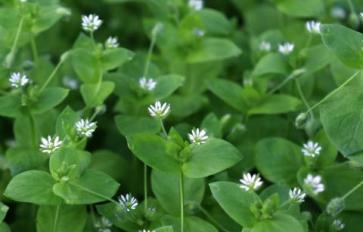
Summer can be one of the most amazing times of year to go foraging, especially if you’ve never been before. There is so much food available for the picking in the summer months that it is hard to be disappointed; it’s almost a guarantee that you will find something tasty wherever you are.
Back in the spring, there were all sorts of leafy green edibles that were nice and tender, but with the onset of summer these leafy greens have now toughened and become less palatable. As the leafy greens dwindle, you will begin to see more and more of the beautiful berries sprouting. You can find blueberries, blackberries, mulberries, serviceberries, and that’s just a few. As the summer months go on, you will start seeing fewer fruits and berries and more seed pods and clusters that are produced from many of the same plants foraged previously, such as Lamb’s Quarters, Amaranth, and Plantain. Many of these seeds can be gathered, winnowed, threshed, and ground into flour and meal for use in the winter months.
Here are 3 plants to look for when foraging in the summer:
Let’s get started!
Chufa a.k.a. Yellow Nut Grass & Yellow Nutsedge (Cyperus esculentus): Yellow Nut Grass is considered to be a noxious weed by many. If they only knew how useful this plant can be! The plant grows in ditches, pond margins, and in low, wet soil. It is the tubers you want from this plant. Simply gather the tubers from the loose, sandy soil any time the ground isn’t frozen. You can use the tubers raw, boiled, candied, dried, or ground down into a flour. You can also make a drink by soaking the tubers for 2 days, mashing them, and blending them in with water and honey. The roots can be roasted, ground, and used as a coffee substitute. There aren’t any known poisonous look-a-likes, but there are several related species. These can be found from the East Coast throughout the Mid-West.
Common Day Lily (Hemerocallis fulva):

If you live anywhere in the United States it is likely you have seen the Day Lily in someone’s garden. The likelihood of you knowing you can eat certain parts of it may be slim to none. That’s right, you can harvest the tubers and flower buds from this plant. Once you have collected the tubers, be sure to replant the root of the plant so it can continue its life cycle. The raw tubers have a sweet nutty flavor – they can be eaten as they are or boiled as you would potatoes. The buds and flowers can be battered and deep-fried like pumpkin flowers. This plant can cause a mild laxative effect, so be sure to eat it in moderation. The only poisonous look-a-like there is to be concerned with is the Iris – when the leaves are young they look similar. To tell the difference, check the leaves: Iris’ leaves arch upright and are dark green; the day lily’s leaves arch over with the tip pointing towards the ground and the leaves are lighter. (Note: Day lily is toxic to cats, so keep any feline friends away from these plants and foods using these plants!)
Ground Cherry (Physalis pubescens):

The ground cherry can be found growing in moist ground in open woodlands and fields. The little fruits are delicious and make great jellies, jams, pies, and salsa. They are somewhat similar to a tomatillo in taste, but are much smaller. You want to pick the fruits anywhere from mid to late summer because the fruits fall before they are ripe. When the fruit is ripe it will be a pretty yellowish orange color. When they aren’t yet ripe they’re green. Avoid eating them when they are green because they are potent and can be slightly toxic. There are several related edible species all throughout North America. You will want to learn how to identify and differentiate between the ground cherry and members of the nightshade family.
It is always difficult for me to choose just a few of the many edibles out there. These three plants listed are fairly easy to identify and use. As I mentioned earlier in the article there is going to be a bounty of berries and fruits to harvest throughout the summer months. Each area on the map has its own hidden tasty treasure that can be found if one knows what to look for. Every month produces new kinds of foods to try. There are many plants, such as the cattail, that have a use during every season. The sooner you learn to forage, the sooner it is you have taken another step towards self-sufficiency.
* Sustainable Tip* When you go out foraging be sure to take only what you need and leave plenty for the wildlife to forage as well. A huge part of being sustainable is being mindful in every action. Replant roots and seeds every chance you get so that you are not only taking, but also giving back.








